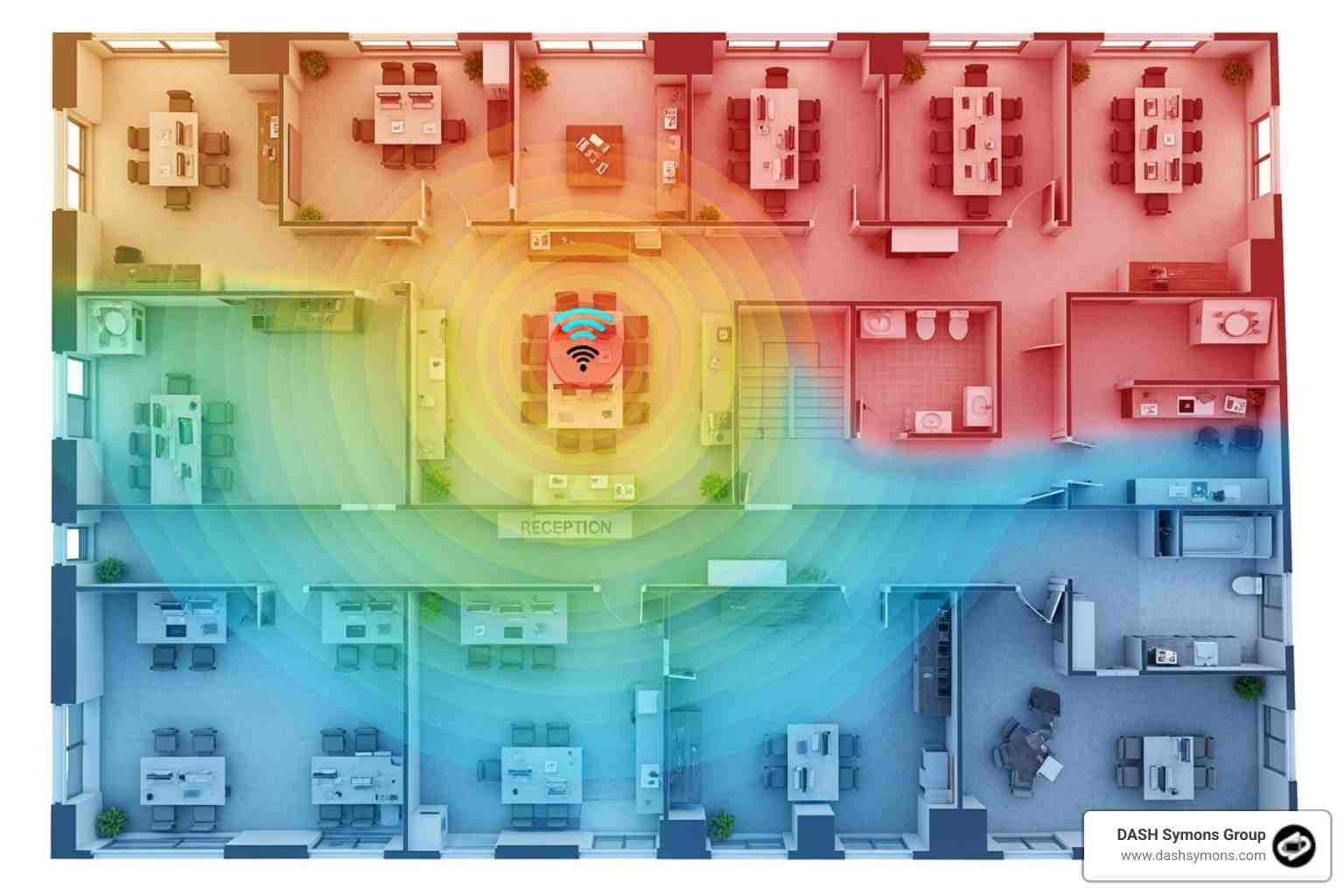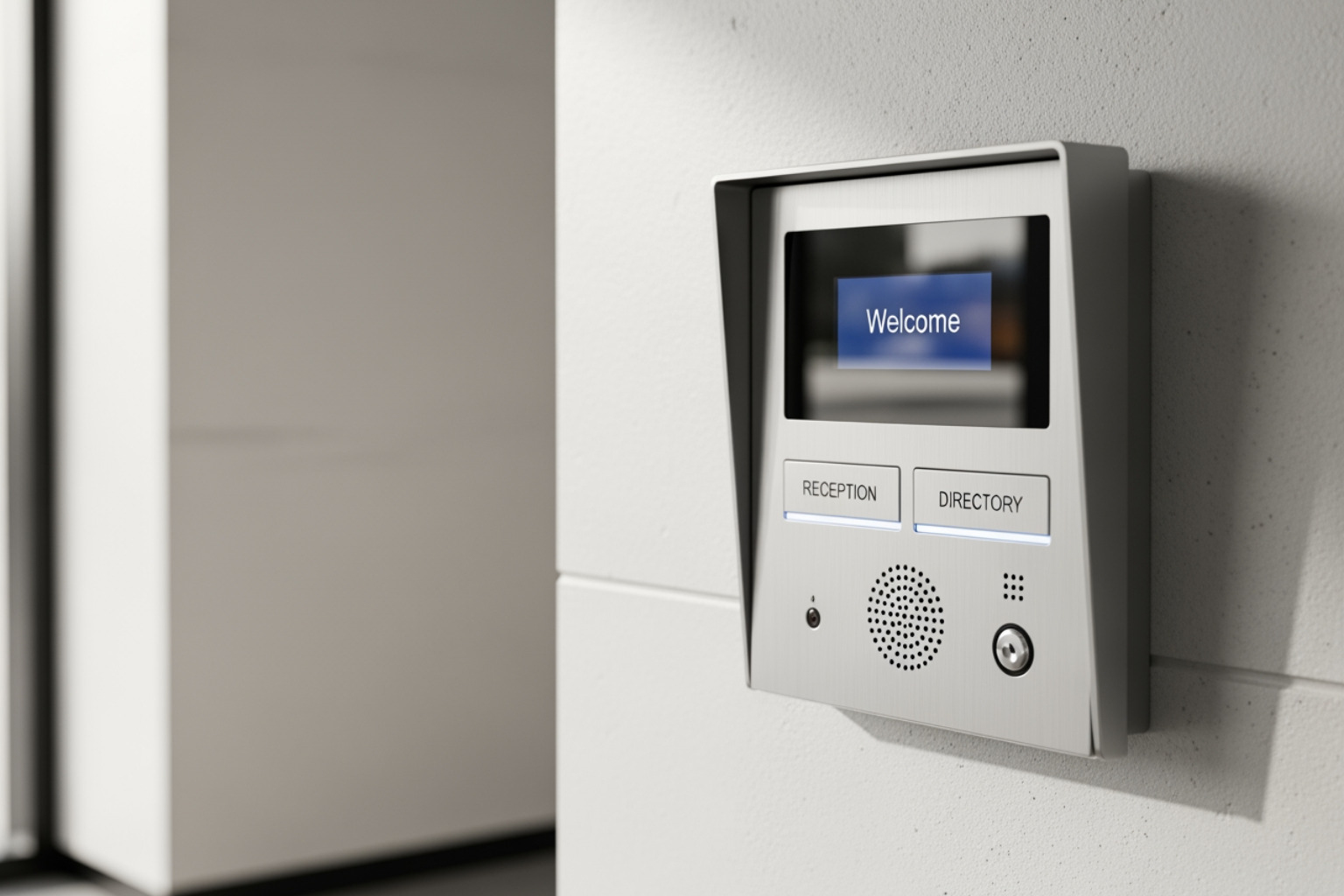
A network infrastructure solution is the collection of hardware, software, and services that forms the digital foundation of your business. It's the critical system that enables everything from daily communications to cloud services and integrated security.
Core Components:
Key Benefits:
With the rise of hybrid work and cloud applications, a robust network is more critical than ever.
I'm Dave Symons, Managing Director at DASH Symons Group. For 16 years, I've helped businesses design and implement network solutions that integrate smoothly with integrated security and automation systems, making operations easier and supporting steady growth.
Think of a network infrastructure solution as your business's nervous system—an intricate web of components enabling every digital interaction. When designed correctly, these elements create the reliable foundation modern businesses depend on.
Hardware provides the physical structure for your digital operations. Key components include:

Network cabling carries data to every corner of your business. The right choice impacts performance and scalability.
Our licensed technicians ensure your data installations meet the highest industry standards for reliable performance. We also design and install cable support systems to prevent physical damage and reduce the risk of costly downtime.
Explore our professional Data Cabling services.
Software and protocols manage, monitor, and protect your network.
Together, these components create an intelligent network infrastructure solution that is secure, reliable, and adaptable.
The modern workplace demands a network infrastructure solution that balances the reliability of wired connections with the flexibility of wireless technology. Understanding when to use each is key to enabling your team to work effectively from anywhere.
Wired Networks: Using Ethernet cables, these connections offer the best possible speed and reliability. They are essential for critical systems like servers, high-performance workstations, and CCTV cameras that require consistent, predictable performance.
Wireless Networks (Wi-Fi): Transmitting data via radio waves, Wi-Fi offers best convenience and mobility. It's essential for supporting laptops, mobile devices, and collaborative, hybrid work environments. Even wireless offices rely on a wired backbone to connect Wi-Fi access points to the core network.
Reliable Wi-Fi requires strategic design, not just a single router.
The Wi-Fi 6 standard has been a game-changer, quadrupling bandwidth per access point to support more devices at high speeds.
We design networks that are ready for tomorrow's technology.
An effective network infrastructure solution is a custom-built platform designed for your specific operational needs and future growth. At DASH Symons Group, we believe a flexible, fault-tolerant network is a key driver of organizational growth.

Designing a network can feel complex, but focusing on five key areas helps create a solution that truly serves your business.
Our certified professionals build your network to strict industry standards, ensuring reliable performance and reducing the risk of costly downtime. The true power of a modern network infrastructure solution is realised when it's integrated with other critical systems.
Connecting your network with CCTV Systems and Access Control Systems creates a unified security ecosystem. This allows for centralised management, streamlined monitoring, and faster response times.
Before designing, we conduct a thorough assessment to understand your current environment and future goals.
This detailed planning is the difference between building a network and building the right network for your business.
A solid network brings two big wins to your business: better performance and greater reliability. First, when your network’s set up right, everything just works faster—whether it’s loading files, using cloud apps, or jumping on video calls. That means less waiting around and more getting things done.
Second, a strong network gives you peace of mind. It keeps your systems stable, secure, and running smoothly—even during busy times—so you’re not constantly dealing with dropouts or downtime. In short, it helps your team stay productive and your business stay on track.
We find many clients have similar questions about network infrastructure solutions. Here are answers to the most common ones.
IT infrastructure covers everything digital in your business—hardware, software, servers, storage, and systems. Network infrastructure is one part of that. It’s focused purely on connectivity, making sure your devices, systems, and people can communicate reliably and efficiently across the business.
There's no fixed schedule. Updates are driven by key factors like:
We recommend regular network assessments to proactively identify when upgrades are needed, preventing performance bottlenecks and security risks before they become critical problems.
A well-designed network acts like a security guard for your business. It helps keep the bad stuff out—like viruses and hackers—by using firewalls, access controls, and smart monitoring tools. It also makes sure that if something does go wrong, the issue stays contained and doesn’t spread through your whole system. Basically, it gives you peace of mind and keeps your business data safer.
A well-designed setup combines the strength of wired connections with the freedom of wireless. When it’s integrated with your CCTV and access control systems, you get a secure, connected, and reliable platform that just works.
At DASH Symons Group, we’ve spent over 16 years helping businesses build smart, future-ready networks.
Your network should support you today and grow with you tomorrow. Let’s make sure it does.
Contact our team today and start building a network that’s built to last.
